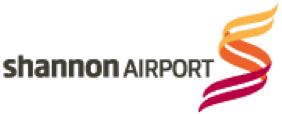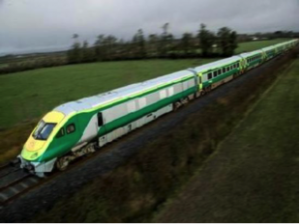Though Limerick is the third largest city in Ireland, it is a charming and easy-to-navigate venue for travelers. Shannon Airport is only 24 km (about 15 miles) from Limerick, and is the most convenient international access for the western Ireland region.
For your convenience, here is a list of Summer 2015 flights into and out of Shannon Airport, including airlines and hubs: http://www.shannonairport.ie/gns/Passengers/flights/where-when-which-airline/summer.aspx.
Finally, Shannon Airport provides a convenient app for iPhone and Android to help you stay in touch as you are traveling: http://app.shannonairport.ie/
Getting to the Campus
To get to the University of Limerick Campus from Shannon Airport, you may travel by car, taxi, or bus. This link takes you to the map with directions to the campus: http://www.campuslife.ul.ie/visitorservices/index.jsp?p=103&n=294
The airport cab desk, located in the arrivals hall, will organize an airport cab for you, wherever you need to go. It is open for all arriving flights.
If you wish to book in advance you can contact the desk directly:
Tel: +353 61 471538
Email: info@shannonairportcab.com
or visit the airport cab website at http://www.shannonairportcab.com/
The approximate cab fare is €45 (includes all passengers in the taxi).
The bus fare from Shannon airport is €5 one-way with a private coach company (JJ Kavanagh ), which drops passengers at the entrance to the UL Campus (25-minute walk to the Cappavilla Village Apartments) or the Stables (a 20-minute walk to the Cappavilla Village Apartments).
![]() JJ Kavanagh Timetable Shannon Airport to UL
JJ Kavanagh Timetable Shannon Airport to UL
The public bus service is more expensive and runs from Shannon airport to Limerick City (€8.40 one-way, €13.20 round-trip), with a second bus (€2 one way) from the city centre to the UL.
![]() Shannon Airport Bus Eirean 051 Schedule
Shannon Airport Bus Eirean 051 Schedule
![]() Shannon Airport Bus Eireann 343 Schedule
Shannon Airport Bus Eireann 343 Schedule
Traveling around Ireland
Want to extend your visit in Ireland? Limerick is located in the Mid West of Ireland, in County Clare. Galway and Ennis are nearby via highway N18. Good highways also link to Cork (N20), Killarney (N21/23), and Dublin (N7). Nothing in Ireland is very far away—but be sure to allow more time for driving, especially on secondary roads. Enjoy the country, relax, and get to know its friendly people.
All train services in the Republic of Ireland are operated by Irish Rail (Iarnród Éireann in the Irish language). See www.irishrail.ie.
Due to the low population density in Ireland, the rail network is less extensive and service is less frequent than in most other European countries. However travel by train is generally a comfortable way to see Ireland. For journeys between Dublin and Cork, and between Dublin and Tralee and points in between, the train is generally faster than driving or taking the bus.
Helpful information for first-time travelers
Like other countries in the European Union, the Republic of Ireland’s currency is the euro (€). Bills (notes) come in denominations of 5, 10, 20, 50, 100, and 500 euros. You will also commonly see one and two euro coins, as well as 1-, 2-, 5-, 10-, 20-, and 50-cent coins (100 cents to the euro).
The euro is worth approximately $1.25 USD; however, exchange rates vary daily. You can check the latest values at http://www.irishtimes.com/business/exchange-rates.
Frequent travelers find it most convenient to withdraw cash using ATMs, where the exchange rate is most favorable, rather than exchanging money at the airport. Confirm with your own bank that your ATM card will work (Cirrus, Plus, and Access generally work in Ireland). Inform them in advance of international travel plans, so that your access should be simple. Check with your bank for any cost associated with using the ATM network while in Ireland. There may be a foreign transaction fee in addition to the regular bank fee.
If you want to exchange your currency in Ireland, a main bank is the best place to change currency. Bureau de change counters in banks usually offer better exchange rates—but be sure to check for local Banking Days when they will be closed.
This site has great information on exchange rates, using ATMs, and other FAQs
Electricity converters and plug adapters
Most electrical items from the USA will not work in Ireland; Ireland and the UK use 230v 50hz electricity, requiring different plugs and outlets than those in North America.
- You will need a power converter and plug adapter if your appliance or electronic device operates on a different current. Check for dual voltage, usually printed on the item as “120/240v, 50/60Hz.”
- Most laptop computer and battery chargers are dual voltage, so all you need is a plug adaptor. For more information, see www.visitireland.com/planning/electricity.asp.
Visas
Travelers from some countries may need visas. A list of countries whose citizens need a visa to visit Ireland can be found at this link: http://www.citizensinformation.ie/en/moving_country/moving_to_ireland/coming_to_live_in_ireland/visa_requirements_for_entering_ireland.html
Value-added tax
In the Republic of Ireland, consumers pay a value-added tax (VAT) on most goods and services. ProComm 2015 delegates may be eligible for a partial refund of this tax. Consult this brochure for details on how to apply for a refund.



